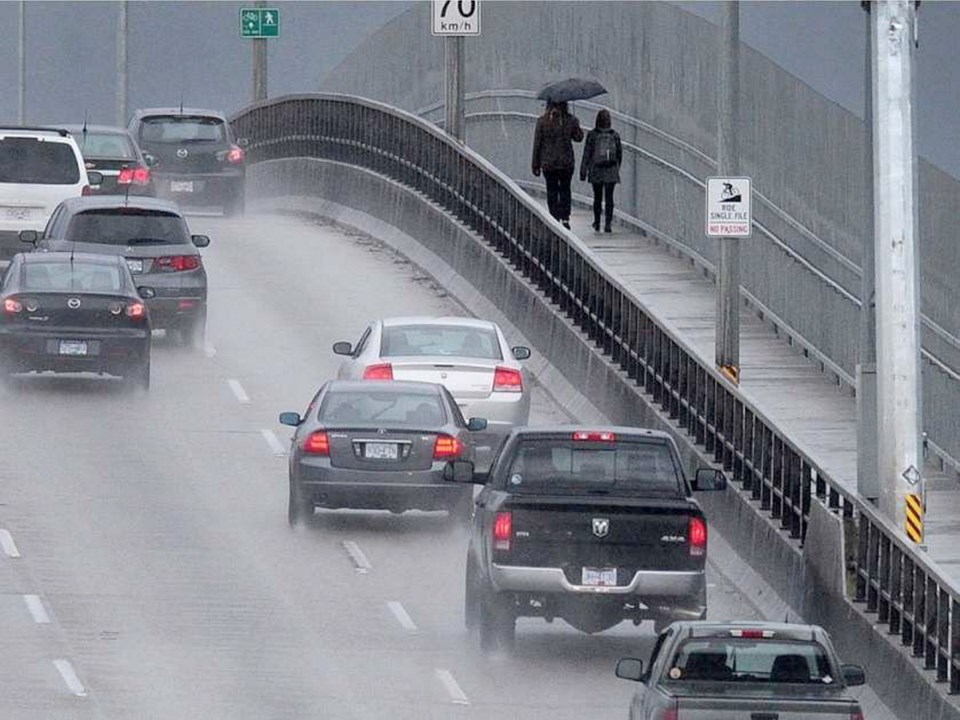“Where’s the storm?” was the question on many people’s lips as the third in a series of three tempests — a remnant of a powerful typhoon — to hit the B.C. South Coast failed to live up to its hype.
To be sure, it has been a wet and windy weekend, with plenty of downed trees, ferry cancellations and thousands of power outages, but dire forecasts of a potentially historic storm in terms of its force and damage didn’t pan out.
“It didn’t pack as strong a punch as we expected,” said Environment Canada meteorologist David Jones of the third storm, a closed low-pressure system that turned out to be weaker than what computer models had predicted.
The forecast of over 100 km/h winds materialized for isolated spots, particularly in the Gulf Islands and Howe Sound. But most of the Lower Mainland was spared. Maximum wind gusts at the Tsawwassen ferry terminal reached 72 km/h, while Vancouver airport hit a max of 63 km/h.
“With the complicated terrain we have here, some areas got a lot of wind and some didn’t,” said Jones.
The second storm, which hit the South Coast on Friday, may also have stolen the third storm’s thunder, noted Jones, knocking down trees and branches that were already vulnerable to strong wind.
The storm took a tragic turn Friday after a falling tree near Clayton Heights Secondary killed 16-year-old Shakir Salaam in Surrey.
There was minimal damage to Stanley Park, which was closed Saturday.
By Sunday night, power had been restored to the majority of customers affected by the storm, with only about 750 homes left without electricity, mostly in the Lower Mainland, Sunshine Coast and Vancouver Island.
B.C. Ferries added four additional sailings Sunday on the Swartz Bay-Tsawwassen and Duke Point-Tsawwassen routes to clear up a backlog created when sailings were cancelled Saturday afternoon and evening.
The impact of the storms by the numbers:
• 238 millimetres — Amount of rain from Wednesday night to Sunday afternoon in Port Mellon. The small community, about 20 kilometres north of Gibsons on the Sunshine Coast, was one of the rainiest spots in the region.
• 70 mm — Rainfall in downtown Vancouver, compared with an average October rainfall of 120 mm.
• 197 mm — Rainfall in Squamish, compared with an average October rainfall of 250 mm.
• 109 km/h — Maximum wind gusts in the Gulf Islands, at Sisters Island near Saltspring Island.
• 91 km/h — Maximum wind gusts in Metro Vancouver, at Point Atkinson (Lighthouse Park).
• 290,000 — Number of B.C. Hydro customers who experienced power outages (since Thursday evening).
• 110,000 — Number of homes without power Friday afternoon, at the peak of the second storm.
• 34,000 — Number of homes without power Saturday night, at the peak of the third storm.
• 378 — Tree/branch calls or emails from the public to the City of Vancouver (from Thursday evening to Sunday 6 a.m.).
• 193 — Calls or emails to the City of Vancouver about flooding incidents.
— Environment Canada, B.C. Hydro and the City of Vancouver



